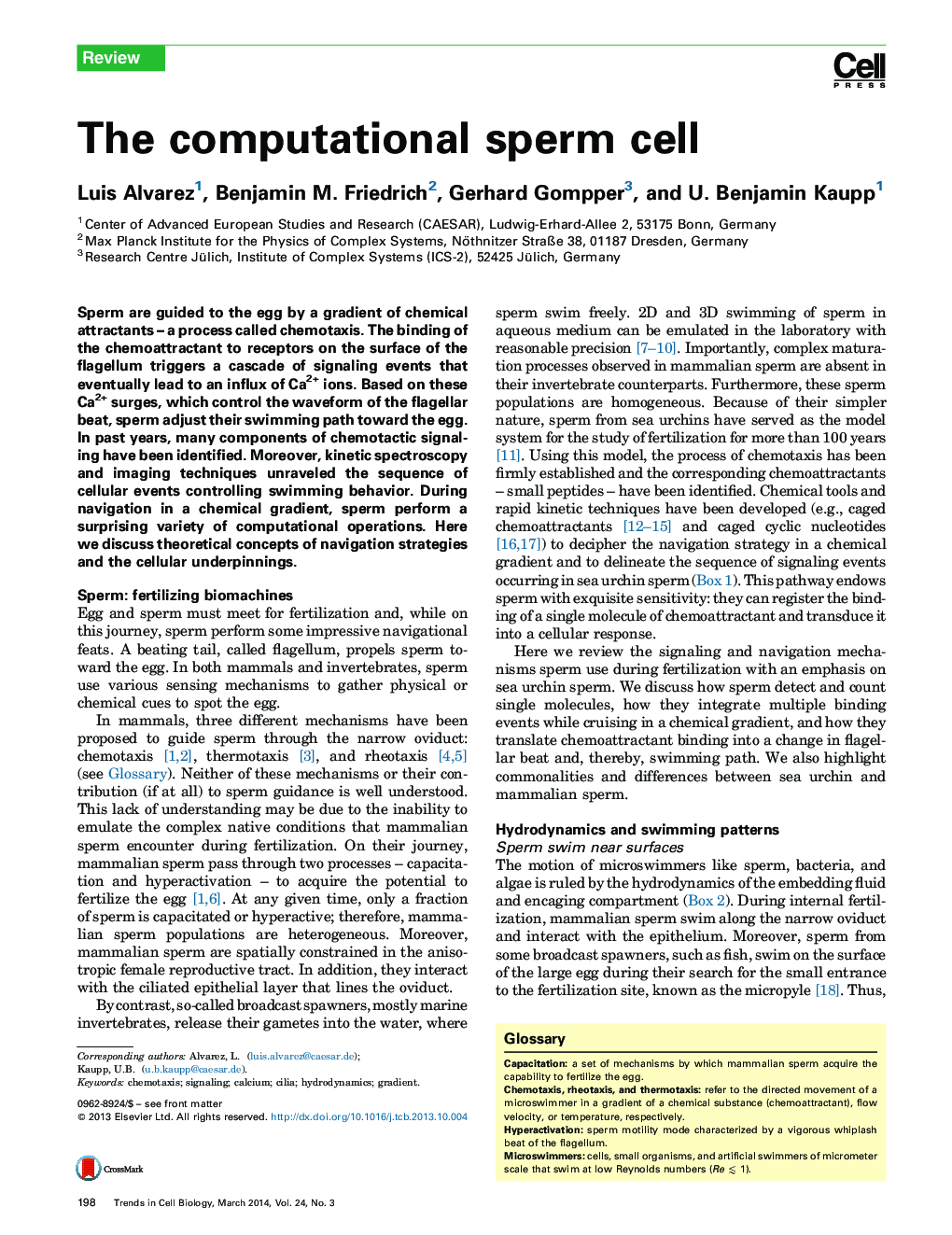| Article ID | Journal | Published Year | Pages | File Type |
|---|---|---|---|---|
| 2204431 | Trends in Cell Biology | 2014 | 10 Pages |
•Due to viscosity, sperm must break a temporal and a spatial symmetry to move forward.•Sperm chemotaxis toward the egg relies on periodic swimming and periodic steering.•A signaling pathway elicits Ca2+ spikes that control sperm steering.•Sperm operate at the physical detection limit and can count single molecules.
Sperm are guided to the egg by a gradient of chemical attractants – a process called chemotaxis. The binding of the chemoattractant to receptors on the surface of the flagellum triggers a cascade of signaling events that eventually lead to an influx of Ca2+ ions. Based on these Ca2+ surges, which control the waveform of the flagellar beat, sperm adjust their swimming path toward the egg. In past years, many components of chemotactic signaling have been identified. Moreover, kinetic spectroscopy and imaging techniques unraveled the sequence of cellular events controlling swimming behavior. During navigation in a chemical gradient, sperm perform a surprising variety of computational operations. Here we discuss theoretical concepts of navigation strategies and the cellular underpinnings.
